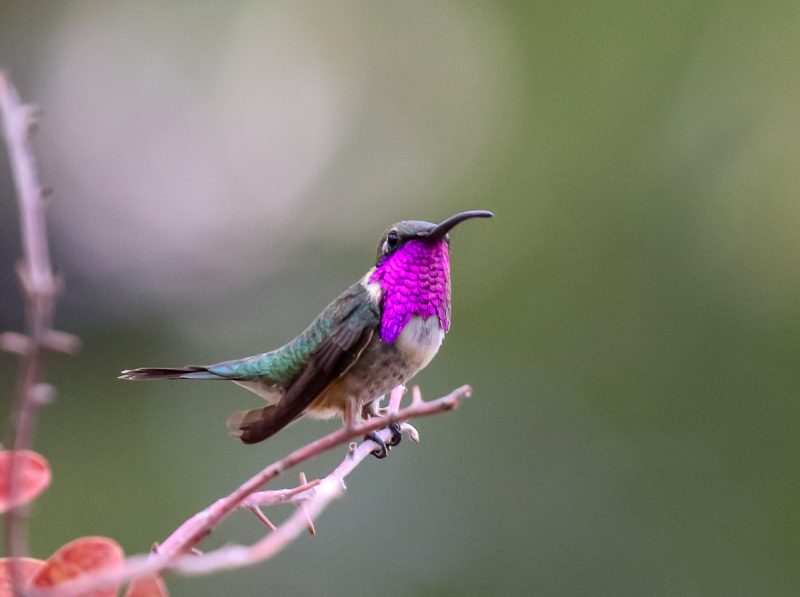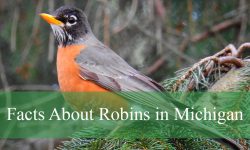Beneath the fiery sunsets and towering saguaros of the Sonoran Desert, a blur of iridescent color flits between cactus blooms and desert shrubs. The air hums with the soft whirr of wings — a sound so faint yet unmistakable. Here in the heart of the Southwest, hummingbirds in Arizona embody the spirit of resilience, speed, and breathtaking beauty.
Arizona, with its mix of desert basins, high mountain forests, and blooming canyons, is one of North America’s richest hummingbird regions. Each year, these dazzling birds migrate, nest, and feed across the state’s varied landscapes — from Tucson’s gardens to the sky islands of the Chiricahuas.
This article uncovers the hidden secrets about Arizona hummingbirds — their species diversity, feeding behavior, migration mysteries, nesting habits, and remarkable adaptations to one of America’s most challenging environments.
The Hummingbird Haven of Arizona

The Land of Unmatched Diversity
Arizona is home to more than 17 species of hummingbirds, making it one of the most diverse hummingbird states in the U.S. While the broad-billed hummingbird, Anna’s hummingbird, and black-chinned hummingbird are common year-round, others like the rufous, calliope, and broad-tailed hummingbirds visit seasonally during migration.
The combination of high-elevation forests, lush desert blooms, and riparian corridors creates perfect feeding and nesting habitats. Few places in North America match the variety seen here — especially during the spring and late summer migrations, when flowers and feeders draw species from Mexico and beyond.
Arizona’s Hummingbird Hotspots
Several areas in southern Arizona have become world-famous for hummingbird watching. Among them, Madera Canyon, Ramsey Canyon Preserve, and Patagonia-Sonoita Creek are crown jewels, hosting dozens of hummingbird species at once.
These regions provide nectar-rich plants and shaded oases — vital stopovers for migrating birds that may fly hundreds of miles between feedings. For birders and scientists alike, Arizona is a living laboratory of hummingbird diversity, where tropical and desert species meet.
Anatomy of a Desert Jewel
The Miracle of Flight
To watch a hummingbird in Arizona is to witness a biological marvel. Their wings beat up to 80 times per second, allowing them to hover motionless in midair or dart backward — a maneuver no other bird can perform with such grace.
Their flight muscles make up nearly 30% of their body weight, and their hearts beat over 1,200 times per minute in flight. Despite their fragility, these birds possess endurance unmatched in the avian world, capable of migrating thousands of miles from Central America to the American Southwest.
Iridescence and Identity
The shimmering colors of Arizona’s hummingbirds come not from pigment but from microscopic structures in their feathers that refract light. This gives the broad-billed hummingbird its electric blue-green glow and the Anna’s hummingbird its magenta crown that flashes in sunlight.
Each male’s iridescent pattern plays a vital role in courtship displays, while the muted tones of females provide camouflage during nesting. The interplay of light and feathers in the desert sun turns every movement into a living gemstone display.
Life Among Cactus and Canyon
Habitats Across the State
From the high pines of the Mogollon Rim to the blooming deserts of Tucson, hummingbirds in Arizona occupy an astonishing range of habitats. The broad-tailed hummingbird prefers cooler mountain meadows, while the Costa’s hummingbird thrives in arid lowlands among agaves and ocotillos.
Even in the driest parts of the Sonoran Desert, hummingbirds find sustenance. Native plants like chuparosa, desert honeysuckle, and ocotillo produce tubular blossoms timed perfectly with hummingbird migration cycles. These plant–bird relationships have evolved over millennia, each depending on the other’s rhythm for survival.
Nesting Secrets
Arizona’s hummingbirds are architects of delicacy. The females construct nests no bigger than a golf ball, using spider silk, lichen, and plant down to form flexible cradles that expand as the chicks grow. Nests are often tucked into mesquite branches, shrubs, or hanging vines shaded from the sun.
Each clutch contains two pearl-like eggs, barely half an inch long. The mother alone incubates them for about 15–18 days, feeding the hatchlings a mix of nectar and insects. Within three weeks, the young are ready to test their wings — tiny pilots entering the desert sky for the first time.
The Secret to Survival in the Desert
Mastering Energy and Heat
The desert’s extremes push hummingbirds to the limits of physiology. Their metabolism — the highest of any warm-blooded animal — requires them to eat nearly their body weight in nectar daily. Yet during cool desert nights, when flowers close and temperatures drop, they rely on torpor, a temporary hibernation-like state that conserves energy.
In torpor, a hummingbird’s heart rate can plummet from over 1,000 beats per minute to fewer than 50, and body temperature drops drastically. By sunrise, they reawaken, ready to feed again among the cactus blooms. This daily dance between energy and exhaustion defines the desert survival strategy of Arizona’s hummingbirds.
The Importance of Water and Shade
Despite their reliance on nectar, hummingbirds also need frequent water sources. They sip from desert springs, drip irrigation lines, and backyard fountains. In Arizona’s heat, shaded feeding stations and flowering native plants are crucial to their survival, offering rest stops during migration.
Even the smallest puddle or misting system can sustain a hummingbird oasis. These microhabitats, often created unintentionally by humans, play an essential role in the desert ecosystem’s survival web.
Diet and Feeding Behavior
Nectar: The Fuel of Flight
At the heart of every hummingbird’s existence is nectar — the sugary energy that powers their hovering flight. Arizona’s native plants, such as penstemon, trumpet creeper, salvia, and agave, provide vital nectar sources year-round.
Hummingbirds use their long, specialized tongues to lap up nectar at astonishing speed — up to 13 licks per second. Their dependence on high-energy food means they must visit hundreds of flowers daily, maintaining a feeding rhythm that never slows.
Beyond Nectar: A Hidden Protein Source
While nectar provides energy, hummingbirds in Arizona also rely on small insects and spiders for protein. They capture gnats, fruit flies, and aphids midair, or pluck them from webs and leaves. These tiny prey provide essential amino acids for muscle maintenance, feather growth, and chick development.
During breeding season, females often increase insect consumption to meet the high nutritional demands of raising young — a dietary secret vital to their reproductive success.
Migration Mysteries
The Long Journey North and South
Every spring and fall, Arizona skies fill with migrating hummingbirds. The rufous hummingbird, in particular, is known for one of the longest migrations in the bird world — traveling from Mexico to Alaska and back. Arizona serves as a crucial refueling station along this route.
Migration timing depends on daylight and temperature, and the abundance of blooming plants. Observers often note waves of hummingbird species passing through in March–April and again in August–September, creating spectacular feeding frenzies in gardens and canyons alike.
How They Navigate the Skies
The mystery of how hummingbirds navigate remains partly unsolved. Scientists believe they rely on a combination of magnetic fields, visual landmarks, and celestial cues. What’s clear is their precision: many individuals return to the same feeders or territories year after year, despite thousands of miles of travel.
This navigational mastery reveals an extraordinary memory — a mental map written across deserts and mountains, connecting Arizona’s oases to the wider world.
Hummingbirds and Arizona’s Ecosystems
Pollinators of the Desert
Beyond their beauty, Arizona hummingbirds serve as essential pollinators. As they feed, pollen sticks to their heads and bills, transferring from flower to flower. Many desert plants — including ocotillo, agave, and coralbean — depend almost entirely on hummingbirds for reproduction.
This symbiotic dance sustains the cycle of desert bloom and renewal, linking the fate of birds and plants in perfect ecological harmony.
The Delicate Balance of Climate Change
Arizona’s rising temperatures and shifting bloom cycles pose growing challenges. Extended droughts reduce nectar availability, while unpredictable frosts affect migration timing. Some species, like the rufous hummingbird, already show signs of changing routes due to warming trends.
Preserving wildflower habitats, maintaining native gardens, and conserving water are now vital to ensuring these pollinators continue to thrive in the desert landscapes they’ve shaped for centuries.
Surprising and Little-Known Facts About Hummingbirds in Arizona
-
The broad-billed hummingbird can hover for nearly a minute without rest.
-
A hummingbird’s wings form an infinity-shaped pattern during flight.
-
They can remember every flower or feeder location within their territory.
-
Anna’s hummingbirds sing complex songs during courtship displays.
-
Hummingbirds have the largest brain-to-body ratio of any bird.
-
Their tongues are forked and covered in tiny hairs that trap nectar.
-
Rufous hummingbirds migrate over 3,000 miles — farther than most birds their size.
-
They can enter torpor nightly to survive cold desert nights.
-
Each species has a unique flight sound — a signature hum produced by wingbeat frequency.
-
The smallest hummingbird recorded in Arizona weighed less than a penny.
Humans and Hummingbirds in Arizona
Backyard Sanctuaries
In Arizona’s cities and rural towns alike, residents play an enormous role in supporting hummingbird populations. Simple steps — like planting native nectar plants, maintaining clean feeders, and avoiding pesticides — can transform a backyard into a refuge.
Cities like Tucson and Sierra Vista have become hummingbird havens, hosting annual festivals where thousands gather to witness the migration spectacle. Every feeder hung and flower planted adds a note to Arizona’s living symphony of wings.
Living in Harmony With the Desert’s Flyers
Respecting hummingbirds means understanding their needs. Feeders should be filled with a 4:1 water-to-sugar solution, without dyes, and cleaned regularly to prevent mold. Gardens featuring native species like desert willow, red yucca, and penstemon offer sustainable, pesticide-free nutrition.
When humans and hummingbirds coexist thoughtfully, both flourish. The desert, once seen as harsh and empty, becomes alive with the flash of feathers and the hum of wings — a testament to the resilience of life.
Conservation Efforts and Future Outlook
Protecting the Pollinators
Organizations such as the Southeastern Arizona Bird Observatory (SABO) and Audubon Arizona work tirelessly to monitor populations, protect habitats, and educate the public about hummingbird conservation.
Preserving wildflower corridors and migratory stopovers ensures that hummingbirds in Arizona continue their vital ecological role. Habitat restoration and responsible gardening practices are key to maintaining the state’s unmatched avian diversity.
The Future of Hummingbirds in the Desert
As climate pressures intensify, the future of Arizona hummingbirds will depend on the resilience of their ecosystems — and the stewardship of people who share their world. Each garden, canyon, and desert bloom becomes a sanctuary in this shared survival story.
Their presence reminds us that even in the hottest, driest corners of the Southwest, beauty and vitality endure — carried on wings no larger than your thumb.
FAQs About Hummingbirds in Arizona
How many hummingbird species live in Arizona?
Over 17 species can be seen across the state, especially in southern Arizona’s mountain canyons and desert oases.
When is the best time to see hummingbirds in Arizona?
Peak migration occurs from March to April and again in August to September.
Do hummingbirds stay in Arizona year-round?
Yes, species like Anna’s and broad-billed hummingbirds remain in southern Arizona through winter.
What flowers attract hummingbirds in Arizona?
Native plants such as penstemon, chuparosa, desert willow, and salvia are top nectar sources.
How often should feeders be cleaned?
Every 3–5 days in warm weather to prevent fermentation and mold growth.
Do hummingbirds sleep at night?
They enter torpor, a deep sleep that conserves energy during cool desert nights.
What predators threaten hummingbirds in Arizona?
Larger birds, snakes, and domestic cats pose the main risks, especially near human settlements.
Are hummingbirds protected by law?
Yes, all hummingbird species in the U.S. are protected under the Migratory Bird Treaty Act.
How can I help hummingbirds during droughts?
Plant drought-tolerant nectar flowers, provide shallow water sources, and reduce pesticide use.
What’s the rarest hummingbird seen in Arizona?
The plain-capped starthroat, a tropical species from Mexico, is an occasional but prized visitor.
Final Thoughts
The hummingbirds of Arizona are more than flashes of color — they are survivors of extremes, pollinators of deserts, and symbols of nature’s resilience. From the emerald forests of the sky islands to the blooming Sonoran plains, they weave life through every petal and drop of nectar.
Their story is one of endurance and grace, told in the hum of wings and the shimmer of light. To protect them is to preserve the heartbeat of Arizona’s wild beauty — a legacy of motion, balance, and wonder that belongs to all who share the desert sky.






